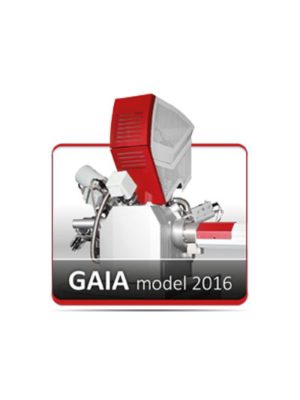GAIA3 2016

GAIA3 2016
GAIA3 model 2016 is the ideal platform for performing the most challenging nanoengineering applications that require ultimate precision and demanding capabilities for microanalysis. Preparation of high-quality ultra-thin TEM lamellae, delayering processes in technology nodes, precise nanopatterning and high-resolution 3D reconstructions are just some of the applications in which GAIA3 excels.
These features make GAIA3 model 2016 the ideal instrument for applications in which imaging at low beam energies is a requirement to preserve delicate structures in samples that can get easily damaged by the electron beam such as low-k dielectric materials, photoresists or uncoated biological specimens. In terms of sample modification, GAIA3 model 2016 represents the most suitable solution for challenging nanomachining and nanofabrication.
Key Features
TriglavTM – newly designed UHR electron column equipped with the TriLensTMobjective along with an advanced detection system
- A unique combination of a three-lens objective and crossover-free mode
- Advanced and variable detection system for simultaneous acquisition of various signals
- Sub-nanometre resolution: 0.7 nm at 15 keV
- Ultimate ultra-high resolution: 1 nm at 1 keV
- Angle-selective BSE detection for maximum topographical and elemental contrast at low energies
- Real-time In-Flight Beam Tracing™ for performance and beam optimisation
- Traditional TESCAN Wide Field Optics™ design offering a variety of working and display modes
- Efficient thermal power dissipation for excellent electron column stability
- New Schottky FE gun now enables beam currents up to 400 nA and rapid beam energy changes
- Ideal solution for inspecting the latest technology nodes in advanced failure analysis processes
- Ideal for imaging delicate biological specimens
- Imaging of magnetic samples possible
- Optimised column geometry makes analysis (SEM inspection and FIB nanomachining) of up to 8” wafers possible
- Unique live stereoscopic imaging using 3D Beam Technology
- User-friendly, sophisticated SW modules and automatic procedures
Cobra FIB column: High-performance Ga FIB column for ultimate precision in nanoengineering
- Top level technology in terms of resolution for both milling and imaging
- Cobra FIB column guarantees the shortest time to result in cross-sectioning and TEM sample preparation
- Ultimate FIB resolution of < 2.5 nm FIB-SEM tomography for high-resolution 3D microstructural analysis
- Ideal for 3D ultra-structural studies of biological specimens such as tissue and whole cells
- Excellent performance at low kV ideal for polishing ultra-thin lamellae and for reducing amorphous layers
Applications
Semiconductors
- Ultra-fine thinning of TEM lamellae to thicknesses of less than 15 nm for failure analysis in ≤ 14 nm technology nodes
- Failure analysis in 3D integrated circuits by means of planar delayering
- Prototyping and circuit edit in multilayered 3D integrated circuits
- Imaging of beam-sensitive structures such as transistor layers, photoresists at low beam energies
- Ultra-high resolution FIB-SEM tomographies for unique structural 3D microanalysis
- In-situ analysis of TEM lamellae by means of transmitted electrons (STEM) or elemental analysis (EDX, transmission-mode EBSD) at sub-nanometre resolution
- Inspection and analysis of 6’’, 8’’ and 12’’ wafers
- Undistorted high resolution EBSD
- Enables pioneering accuracy in prototyping, ion beam lithography (IBL), failure analysis of integrated circuits and thin-layer measurement
- Milling or depositing small specific structures, benefits of combining FIB with Electron Beam Lithography (EBL)

Materials Science
- Imaging of non-conductive materials such as ceramics, polymers, glass
- Characterisation of nanomaterials such as nanotubes and nanorings
- Fatigue and crack formation analysis in metals and alloys
- Fabrication of nanostructures such as nanodisks, contacts or hall probes by means of electron beam lithography or focused ion beam induced deposition
- Imaging of magnetic samples
- Preparation of spintronic structures for the purposes of domain wall motion in magnetic materials and studies on magnetisation dynamics
- Distinguishing isotopes or species with similar nominal mass by means of TOF-SIMS analysis
- Analysis of Li-ion electrodes by means of TOF-SIMS
- High-resolution FIB-SEM tomographies to characterise materials by means of elemental distributions, phases and crystal orientation
- Corrosion growth studies by means of secondary ion imaging
- TEM lamella preparation

Life Sciences
- Observation of biological specimens in their uncoated state at low electron beam energies
- High-resolution FIB tomography of highly localised zones for unique 3D structural information of specimens such as resin-embedded animal or vegetal tissue and cells
- Preparation of thin TEM lamella of animal and plant tissue for ultrastructural sample analysis
- In-situ TEM lamella observation at sub-nanometre resolution
- High-resolution surface elemental analysis by means of TOF-SIMS
- Investigation of cell morphology, development of biocompatible materials, tissue engineering, microbiology
- Variable pressure modes and cryo-techniques for imaging delicate samples
- Correlative light-electron microscopy
- Cryo-FIB-SEM analysis of fully hydrated biological specimens

